Hearth to Hearth: Women in Food Advertising – The Journal of Antiques and Collectibles – October 2002
Nineteenth-century American women, adapting to the mushrooming cities of their century, undertook a new role and learned to become proficient in the arts and skills of consumerism. As they continued to be the practitioners of home cooking, they became the obvious targets of those selling kitchen wares and foods. Late nineteenth-century trade cards, one of the earliest forms of modern advertising, are a wonderful source of information about this moment and the shifting connection between women and food—their roles in the family and as shoppers in local establishments, the ways in which they outfitted, arranged, and worked in their kitchens, and the way the world saw their place in society. Most of the cards cited below are undated, but their period is fairly certain; it was relatively short-lived, mostly before the turn of the century or just after it, and unique.
As farm families moved to the cities and men’s work moved out of the home, women took on control of a new responsibility—management of the household and its economy. They mastered comparative shopping and budgeting, hitherto unnecessary in the countryside where most families produced their own materials to meet subsistence needs. Today we laugh at the clichéd jokes about women and shopping, but they seem to have been based on this important innovation. The figure of a shopping woman was thus something of a mark of new times as it suggested her modernity, her new ability to manage the family money and presumably do it well, and her new leisure that accompanied the switch to a cash economy. The fancy food in the shop window tempts a stylish shopper, conveying a message about her refined tastes and the ability of N. B. Richardson’s Grocery to meet her standards. [Figure 1] In a similar fashion, the Anglo-Swiss Condensed Milk ad portrays shoppers as gentile and well respected by the deferential shop keeper. [Figure 2]
In fact, trade cards reflected a number of interesting themes. For one, they distinguished between the mistress of the house and her servants, and between upper and middle classes, and used entirely different persuasions for each, according to what they would be likely to buy. Some advertisers, by using references to a well-situated mistress, implied that their products had commensurately high status. Perhaps such a woman would not need to consider budget but could please herself with quality and fashion. A Louis Prang trade card, unstamped by distributor, shows a fashionable woman serving at her elaborate dessert table. [Figure 3] In Figure 4, Rumford’s “Horseford’s Self-Raising Bread Pre-parations . . . the best and cheapest baking powder in the market” declares its place in high society.
One skewed the message to the expense of the merchandise. A Garland stove promotion shows a well-situated homemaker using her poise and authority to direct her servant, portrayed as somewhat inept. This ad is obviously intended for a wealthier audience—the wealthier homeowners—and not the servants who would not buy such expensive kitchen furnishings. [Figure 5.]
Some ads pictured professional cooks who sometimes did the marketing for their wealthier homes, and who were portrayed as ultimately knowledgeable. They were probably both the target and the message. In an Armour Beef Extract card the cook was a well-dressed, efficient-looking woman. The reverse of the card shows her association with an assortment of other kinds of cooking professionals. She is depicted in a well-appointed kitchen pouring her soup (strengthened by Beef Extract) into an elegant tureen that will shortly be on its way to a formal dining room. Her authority was no doubt the image Armour used to imply the stature of his product. His potential customers would, it was to be hoped, follow the lead of experts using wealth and taste. [Figure 6].
On the other hand, some promotions portrayed servants in extremely unflattering ways. Typical of scapegoating in general, middle class consumers were made to seem superior at the expense of their “inferiors,” and thus endowed with the judgement to make a superior purchase. The servants here were usually shown as (to them) laughably ignorant. For example, a Union and Pacific Tea Company card depicts a maid who is untutored in culinary niceties, and to make the card more “comical,” hangs it on the common anti-Irish feeling of the day. Other anti-immigrant biases—anti-Semitism, anti-African American, or anti- rural prejudices—were also seen frequently in this era of anti-immigrant feeling. Needless to say, the lower classes of domestic servants were not the important consumers and therefore there was no trade lost by denigrating them. [Figure 7.]
Some ads appealed to the large range of homemakers who did their own cooking, but sometimes the distinctions are hard to draw. The cook pictured is often the housewife herself, to judge by her elaborate gown. On a Stickney and Poor Spice trade card we see such a woman working intently on a large bowl of batter. The card is meant to appeal to the housewife who apparently does her own careful marketing with both gentility and concern for her family’s satisfaction. [Figure 8.]. Another card, “The Little Housewife,” a trade card selling Granite Iron Ware, shows the lady of the house doing her own work , dressed in (for then) historical dress suggesting the wisdom and judgement of the elders, and projecting an image of sweet propriety, then the idealized women’s role. Perhaps the patronizing term “little” in the title shows how the general regard for housewifery had declined by the end of the century. This is a great example of mixed messages typical of the time: affection, condescension, respect and denigration—all trying create a positive image that would sell a product. [Figure 9.]
Women’s social roles were another way to draw in an audience. In the time when aging was respected for the presumed wisdom gained through experience, images of elderly women brought a kind of practical testimony of their own. A grandmother is pictured drinking Great Atlantic and Pacific Tea and commenting that their “celebrated Teas and Coffees have been my solace through life.” [Figure 10.] Another sips a cup of Union Pacific Tea, indicating that her wise choice is in part a product of her comfortable surroundings, a fine brass tea urn, and fine clothes. [Figure 11.] Another grandmother believes that “Cleveland’s Baking Powder makes the finest cake and biscuit I ever saw. We had no such helps when I was young.” [Figure 12.]
Mothers were charged with imparting their domestic wisdoms to their daughters, training them for economy in housekeeping and cookery. A matron shows her daughter the best labor-saving tools for handling arduous holiday cookery, and advises that the American Meat and Vegetable Chopper will handle Christmas Pies in four minutes, “Saving its Cost in Labor every year.” [Figure 13.] A Cleveland Baking Powder card shows a maternal lesson in cake-baking. [Figure 14.]
The women’s world also included interactions with one’s community. A neighbor drops in and offers advice to her unfortunate friend, or a group of friends gossip over a Granite Iron Ware tea service. [Figures 15 and 16.]
Long before the turn of the century women in need of support had begun to take jobs in what had been thought of as the man’s world of business. The advertisements for larger equipment occasionally reflected this. For example, The Florence Oil Stoves advertised their industrial size stoves with an illustration of a restaurant kitchen, in which we see two women and three men working. It is unlikely that this card was aimed at homemakers, but was more likely intended for restaurateurs. It carries with it some confusion: although it was imprinted with the Florence message, it was overstamped with the name and address of an entirely different dealer, that of C. P. Bell, of Nashua, N. H., who sold sewing machines, pianos and organs. [Figure 17.] Another: The Boston Branch Meat & Vegetable market stamped its message over a Conqueror Wringer ad showing a group of three women working in a kitchen on “baking day.” [Figure 18.]
Apparently work scenes and cookery were good eye-catchers. They reflected life as people knew it, and were expected to sell one’s wares, regardless of the product.
Alice Ross brings 25 years as a dedicated food professional teacher, writer, researcher and collector to her Hearth Studios, at which she teaches workshops in various aspects of hearth, woodstove and brick oven cookery. She has served as consultant in historical food for such noted museums as Virginia’s Colonial Williamsburg and The Lowell National Historical Park in Massachusetts. Ross wrote her doctoral dissertation in food history at the State University at Stony Brook. Currently, she is involved in a major kitchen report on Rock Hall Museum, a 1770’s Georgian mansion on Long Island. Dr. Ross’ e-mail address is aross@binome.com. Her web site is www.aliceross.com
[amazon_carousel widget_type=”SearchAndAdd” width=”550″ height=”200″ title=”More on Hearth cooking:” market_place=”US” shuffle_products=”True” show_border=”False” keywords=”Open Hearth Cooking” browse_node=”” search_index=”Books” /]

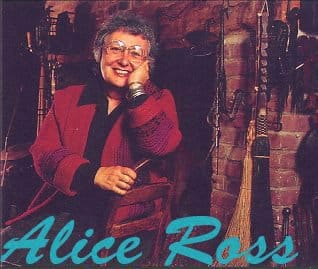

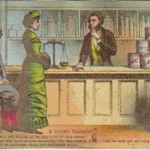
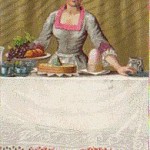
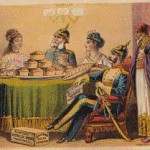
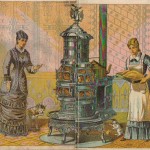
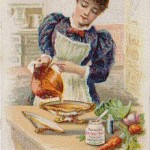
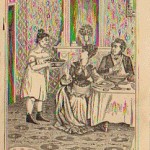
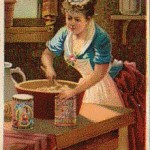
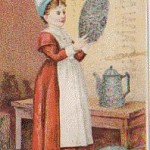
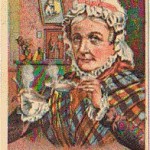
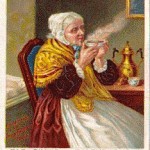
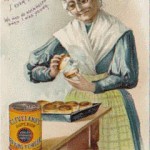
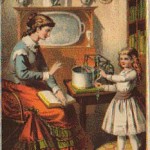
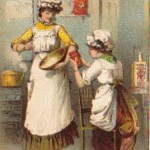
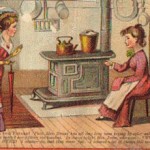
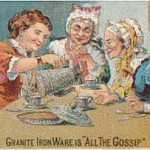
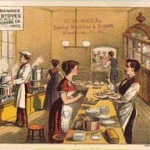
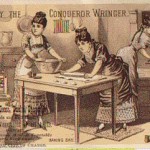



Related posts: